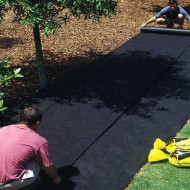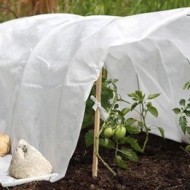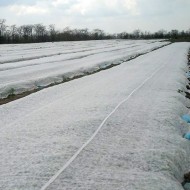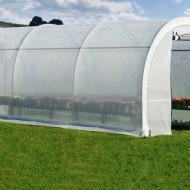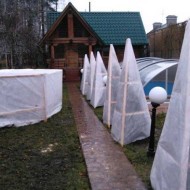Overview of types of covering materials for beds and their features
Content
Why cover the beds
Covering material for greenhouses and garden beds allows you to grow various vegetables and fruit crops all year round. Thanks to the use of dense polyethylene film and non-woven fabric, made by applying innovative techniques and technologies, it is possible to significantly increase the fertility of cultivated plants. Experienced farmers say that it is possible to harvest several crops from some crops in one growing season.
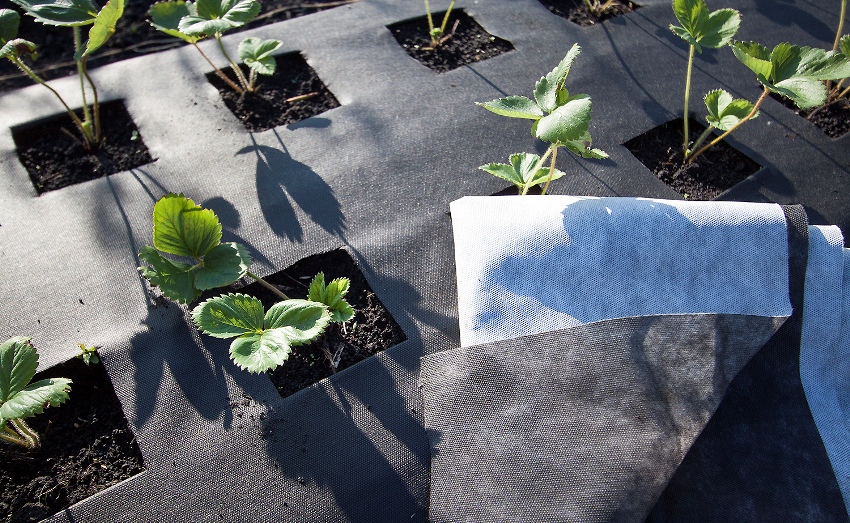
Covering fabric is a synthetic fabric made of polymer material. Due to its durability, high strength and excellent wear resistance, the covering fabric is widely used in industrial and road construction, agriculture, landscape design, medicine, cosmetology and other fields of activity.
The main functions of the covering cloth used in the national economy include:
- protection of vegetation from direct sunlight, temperature changes and various precipitation;
- acceleration of fruiting;
- increase in yield indicators;
- retention of moisture and nutrients in the soil;
- protection of cultivated plants from weeds, insect pests and pathogens of viral, fungal and bacterial infections.
The use of a covering material in agriculture not only improves yields and protects vegetation, but also makes it easier for summer residents to take care of their crops. Dense non-woven fabric and plastic wrap can be used to cover garden beds, create frameless and frame structures, sheathing greenhouses and greenhouses.
Video: "Covering material for beds and greenhouses"
From this video, you will learn how to choose the right covering canvas to protect the vegetation growing in the beds in the garden.
Nonwovens
Today, horticultural stores offer a wide range of nonwovens that can be used in agriculture. To cover greenhouse structures and frames, a fabric of high density and excellent wear resistance is required. It is better to cover vegetable and fruit crops growing in the garden with thinner, but at the same time breathing matter. It is recommended to mulch the soil with a dense black cloth.
We bring to your attention a short overview of the best nonwovens, based on the feedback and recommendations of experienced farmers.
Lutrasil
Lutrasil synthetic covering material is made from polypropylene fibers and threads. Available in white and black. A white canvas is used to shelter plants growing in open ground. Uniform dispersion of sunlight over the surface and protection from ultraviolet rays help to enhance the growth and development of cultivated crops.
According to the reviews of experienced summer residents, white lutrasil with a density of 23 and 30 g / m² reliably protects fruit, deciduous and coniferous shrubs and trees from the cold. In the northern regions, where there are severe frosts all winter, it is recommended to put pine spruce branches on top of the covering material. Garden roses covered with lutrasil and other decorative crops are not afraid of wind, hail and frost.
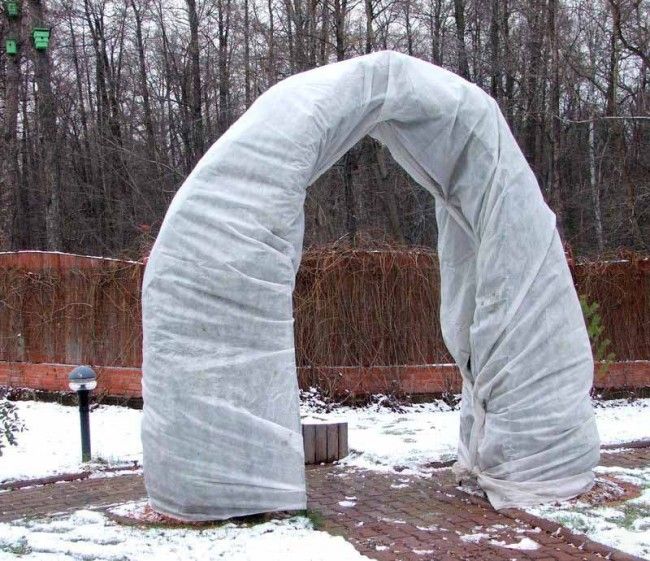
Black covering material, which is characterized by elasticity, strength and high wear resistance, is used for mulching the soil in the beds. With proper care and careful storage, dark lutrasil with a density of 60 g / m² will last at least 3-4 seasons.
Geotextile
Geotextile fabric is made by weaving synthetic fibers of polypropylene, polyamide, polyester and polyester. The resulting fabric is characterized by increased strength and a high degree of resistance to mechanical damage, dynamic loads and weather conditions. Due to its technical characteristics, high wear resistance and durability, geotextiles are used for reinforcing embankments, arranging pedestrian zones, sidewalks and driveways, and building roads.
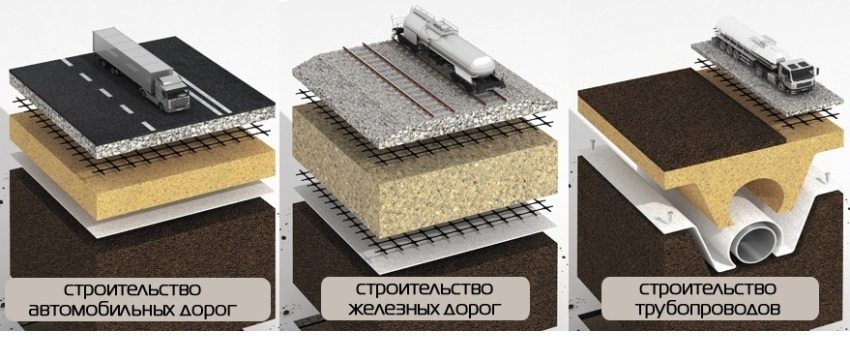
As for the use on the territory of the summer cottage, geotextile is used to equip garden and driveways, protect vegetation from weed grass and drought, as well as limit the growth of roots of ornamental shrubs and fruit trees. Dornit geotextile improves filtration, waterproofing and drainage properties of the soil, maintains an optimal level of soil insulation and serves as a kind of barrier for the spread of insects and weeds.
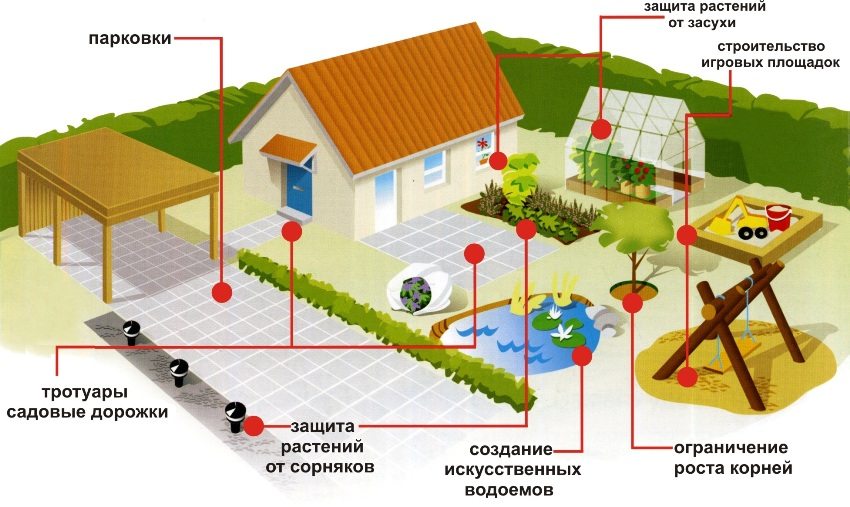
Spunbond
The covering fabric, made by using the innovative spunbond technology, is distinguished by excellent technical characteristics. Polymer acrylic is melted and passed through fine dies. The resulting threads are combined into a monolithic canvas. The non-woven covering material made in this way has several names, among which the most common are spunbond, agrofibre and agrotechnical.
Spunbond with a density of 17 g / m² protects plants from overheating and hypothermia, and also reduces the likelihood of the spread of various diseases in the beds. Cloths with a thickness of 42, 60, 90 and 110 g / m² are suitable for covering greenhouses and greenhouses. Double-sided spunbond is the optimal solution for mulching soil in the garden and in the garden. A flower or shrub covered with a non-woven fabric receives a sufficient amount of light, but at the same time it is not negatively affected by ultraviolet rays.
"Mulchagram"
The newest covering material "Mulchagram", which is made on the basis of coconut fibers, is popular with flower growers, gardeners and winegrowers. The brown fibrous web protects plants from harmful insects, small rodents and weeds.
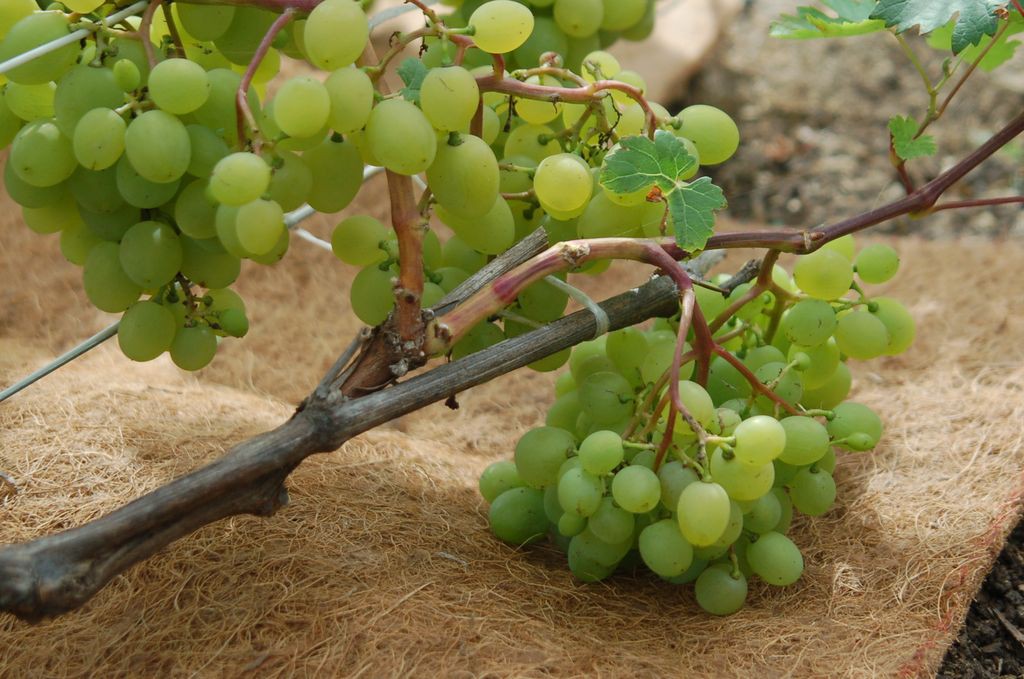
The advantages of the covering material "Mulchagram" include:
- use in the production of 100% natural plant fibers;
- absence of toxins, various impregnations, adhesives and other harmful substances;
- protection of plants and soil from overheating and drying out;
- the ability to maintain an optimal level of soil moisture;
- excellent air circulation, no mold and mildew spores on the outside;
- the ability to self-decompose after 3 years of active use.
"Wrap up"
The jute material, which was previously used to insulate heat-loving crops for the winter, was replaced by the more durable and practical Obernit canvas. The new covering material protects plants not only from severe frosts, but also from sudden temperature changes. Due to the high light transmittance and air circulation, the plants do not die or rot under the fabric, as it was with the jute shelter.

"Obernit" with a density of 17, 30 and 42 g / m² is used as a cover for seed crops and seedlings planted in open ground. The presence of polybiocides in the composition of the covering cloth - special substances that serve as a barrier to the development of fungal and bacterial infections - reduces the risk of developing diseases that are dangerous for vegetable and fruit crops.
The fibrous structure of fabric with a density of 60 and 180 g / m² is often used in Siberia, the Urals and other northern regions, where the air temperature does not rise above zero in winter.
"Luck 60"
Covering material of non-woven type "Good luck 60" is available in white and black colors. The light-colored canvas can be laid on top of crops growing in the open field, since the translucent porous structure allows the plants to breathe. The black canvas is used for mulching farms and summer cottages from the abundant growth of weed grass.
"Fortune 60" can be used as a covering material for the winter. Frost-resistant fruit and ornamental shrubs and trees do not cover for the winter. In order for the plant to cope with the cold and quickly recover in the spring, you need to mulch the soil in the near-trunk circle with sawdust, straw, fallen leaves and peat. A non-woven fabric is laid on top of the embankment, which protects the root system from icing.
Polyethylene film
Despite the large selection of non-woven covering fabrics, plastic wrap does not lose its popularity among gardeners. This material has a wide range of applications, has good light transmission and protects plants well from bad weather and weeds.
The use of innovative technologies in production has made it possible to improve the technical characteristics of some types of polyethylene.
Reinforced
Reinforced polyethylene is able to withstand harsh weather conditions and is UV resistant. Reinforced film is used to cover the frames of greenhouse and greenhouse structures. Subject to the fastening technology and proper care, such cladding will last at least 3-5 years. According to gardeners' reviews, the reinforced film is resistant to stretching, deformation and various types of mechanical damage.
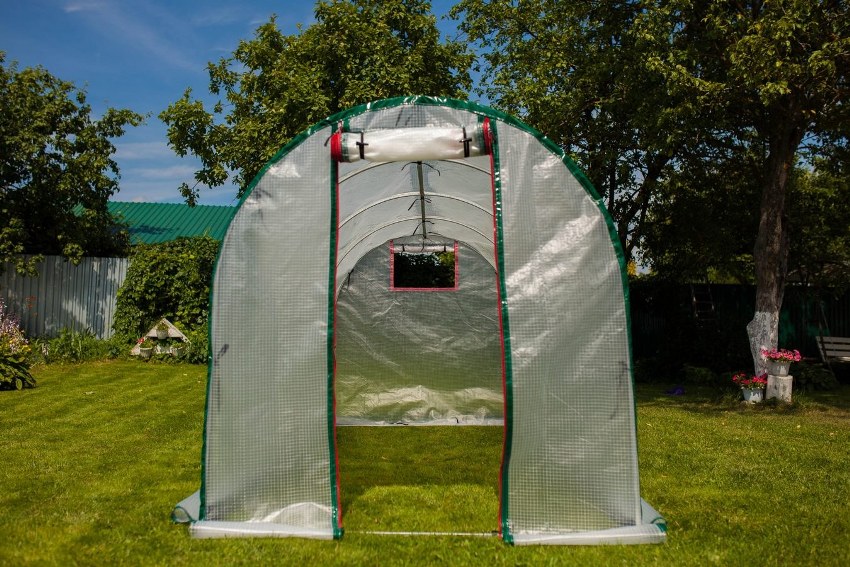
With air bubbles
The air bag, as polyethylene film bubbles are often called, protects against hypothermia and maintains a high level of thermal insulation. The pimpled cloth is used to cover greenhouses and greenhouses during severe frosts. However, the film must be removed as soon as the frost recedes. Otherwise, the lack of air will lead to the accumulation of moisture inside. To prevent this problem, it is recommended to make a small hole in the film. You can use a sharp metal or wooden peg for this.
Black and white
Double-sided polyethylene has a double effect: the black side serves as a kind of barrier to the growth and spread of weeds in the area, the white side protects vegetables and fruit crops from bad weather, wind and sunlight. The black side should face the ground.
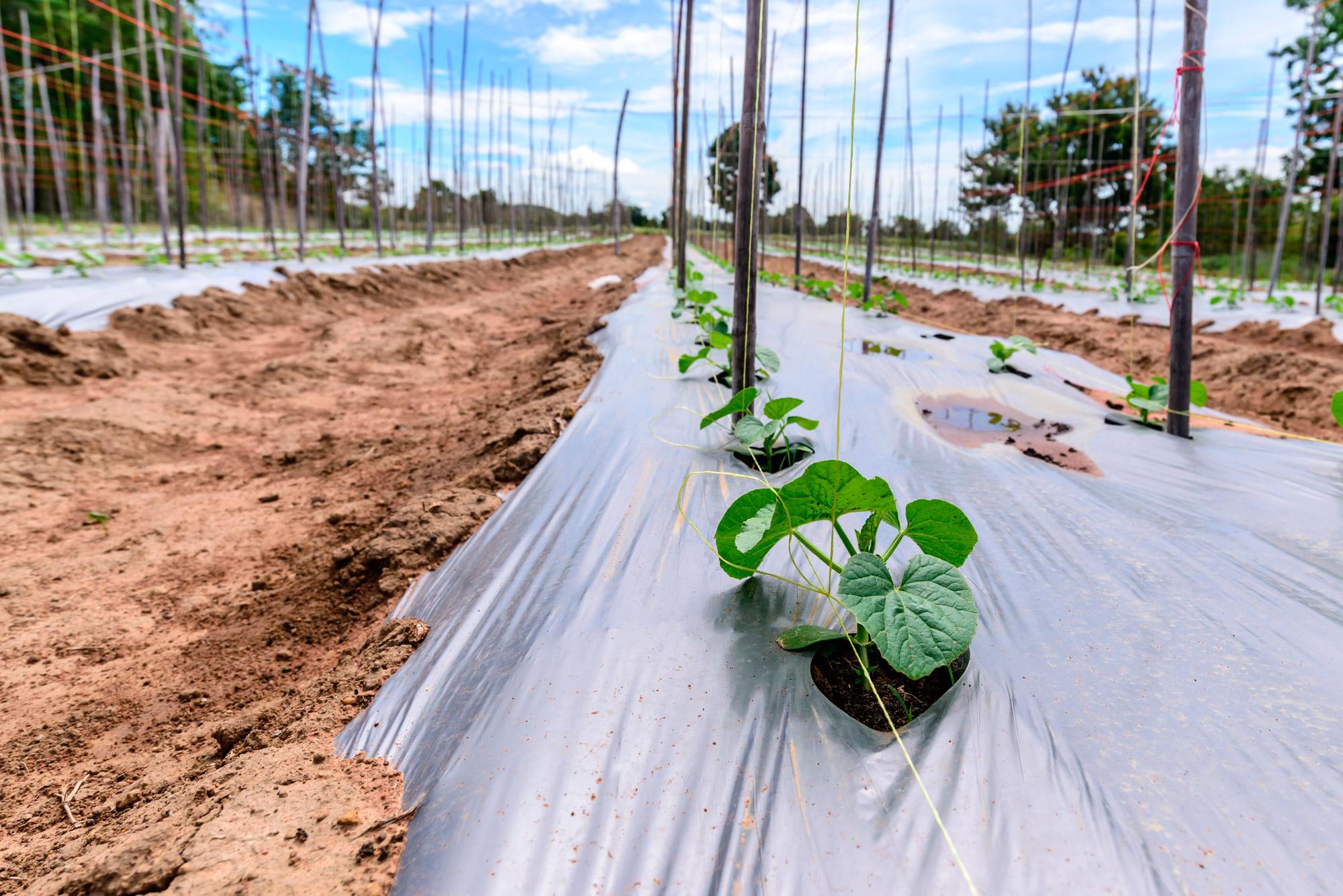
The main advantage of the polyethylene film is the low cost of a running meter. However, polyethylene does not allow air to pass through, which leads to the appearance of fungal spores and the formation of mold on plants.
Most modern covering materials can be used both outdoors and in greenhouses. When choosing a nonwoven fabric or polyethylene film, you need to pay attention to the technical characteristics and the intended purpose of the product. The wrong choice can lead to stunted growth and development of cultivated plants.

